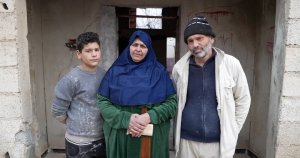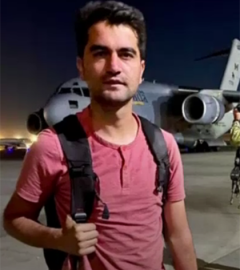Returning Syrians face economic and security challenges – UNHCR
Over the almost seven months since Syrian dictator Bahar al-Assad was deposed, refugees have been returning in their thousands to Syria.
During 15-years of civil war, more than 13.5 million Syrians were displaced from their homes, with most finding refuge in neighbouring countries, including Turkey, Lebanon, and Jordan.
Increasing numbers are now returning to their homeland but they face significant challenges because of the widespread destruction caused by the war, among them a lack of housing, poor safety and security, a lack of services and economic hardship.
There is still continuing violence in Syria as well attacks by militant groups on Christian churches.
In the north, there are pockets of fighting between Turkey-based groups and the Syrian Defence Forces. And there have been incidences of violence against Alawites, the ethnic group closely associated with Assad.
There have also been Israeli airstrikes in southern Syria, around the bordering regions of the Israeli-occupied Golan Heights.
Israel launched numerous attacks after Assad was deposed, taking advantage of the situation to destroy a number of Syrian military assets. 
But the biggest obstacle to the mass return of refugees remains the devastation of Syria’s cities and infrastructure, and limited access to shelter and electricity.
Though most Syrians say they intend to return, a recent UNHCR survey found that housing, safety, lack of services and economic hardship were the key reasons many do not plan to return in the next year.
The UN refugee agency UNHCR says Syria remains in one of the world’s largest displacement crises, with over 12 million people – refugees and internally displaced persons – unable to return home to safety, security, or basic supplies.
UNHCR chief Filippo Grandi has warned that without adequate support to rebuild critical infrastructure, such as schools and homes, many of these recent returns may prove temporary, leading to continued displacement.
Upon return, both refugees and IDPs have found their homes damaged or destroyed.
Essential services, including water, sanitation, electricity, roads, and sewage systems, remain in shambles; and public health needs continue to escalate due to a broken infrastructure and a lack of resources.
The Syrian government has called on Western governments to help with the multi-billion rebuilding costs with the US and EU already agreeing to lift sanctions to allow rebuilding to begin.
Many Syrians, however, are not intending to return having spent a decade building new lives in other countries.
And, for families with children born and raised overseas, there is even less incentive to return, particularly given the ongoing instability and poor living conditions.
According to the UNHCR, over two million people have returned to their areas of origin – a total that includes 1.5 million internally displaced people and about 600,000 from Lebanon, Turkey and Jordan.
Turkish authorities report between 1,300 and 1,400 daily border crossings.
But among the nearly one million Syrian refugees in Europe, mainly in Sweden and Germany, there have been few returns, although some EU countries have made moves to encourage returns.












